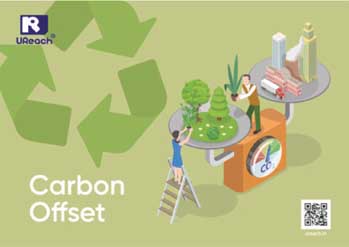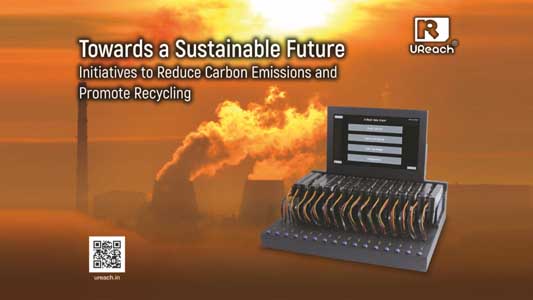In the backdrop of escalating global climate crisis, countries worldwide are increasingly focused on reducing emissions of carbon dioxide and other greenhouse gases. The issue of carbon emissions is not only about environmental protection but also a crucial challenge for social development. This article aims to explore carbon dioxide emissions and propose corresponding recommendations and measures.
Global Carbon Emission Issues
Carbon emissions have emerged as one of the most urgent issues today, directly threatening global climate stability. It is widely recognized in the scientific community that human activities, particularly the combustion of fossil fuels, deforestation, and industrial processes, have significantly increased concentrations of greenhouse gases in the atmosphere. The accumulation of these gases traps heat, leading to global warming, disrupted weather patterns, rising sea levels, and an increased frequency of extreme weather events.
In order to mitigate these impacts and ensure sustainable development, countries worldwide have embarked on ambitious initiatives to limit carbon emissions. From the early days of the United Nations Framework Convention on Climate Change (UNFCCC), to the signing and implementation of the Kyoto Protocol, and more recently the Paris Agreement, countries around the world have actively participated with the aim of achieving common goals. These agreements not only establish specific targets and timelines for global greenhouse gas reductions but also foster policy cooperation and technology transfer on a global scale to address the challenges of global warming.
Strategies and Measures to Reduce Carbon Emissions
As a densely populated and rapidly growing economy, India continues to experience a rise in carbon emissions, making it the world’s third-largest emitter of carbon dioxide. This phenomenon not only profoundly impacts India’s environment and weather patterns but also places significant global responsibility on addressing challenges related to climate variations. Consequently, the Indian government has been compelled to adopt proactive measures to tackle this increasingly urgent issue.
The Indian government has formulated a series of targeted policies and measures to reduce carbon emissions and promote sustainable development. Firstly, India has been promoting the large-scale deployment of clean energy in the energy sector, including the promotion and investment in solar and wind energy. India is one of the largest solar energy markets globally, attracting significant investments from both private and public sectors through policy support and incentives. Secondly, India is actively advancing energy efficiency improvement programs aimed at enhancing energy use efficiency in the industrial and building sectors. These measures not only contribute to reducing carbon emissions but also help reduce energy dependency and costs.
The Importance and Application of Recycling Initiatives

In addition to directly reducing carbon emissions, recycling initiatives represent an effective pathway to lower carbon footprints. Enterprises can participate in carbon trading by recycling metals, electronic equipment, and other materials, thereby reducing resource waste as well. Take IT equipment recycling as an example: manufacturing a single hard drive emits approximately 18 kilograms of carbon dioxide. Therefore, employing specialized hard drive wiping machines can significantly decrease carbon emissions during recycling operations, while also generating additional economic benefits for businesses.
The Ministry of Power (MoP) of India announced the Carbon Credit Market Scheme on June 30th last year and established a National Steering Committee to oversee and manage the carbon market’s operations. Recycling initiatives serve as crucial means to achieve carbon reduction goals, enabling industrial sectors to diminish their carbon footprints, reach carbon offsets or earn carbon credits. This contributes to India’s efforts in mitigating climate change and promoting sustainable development. The IT equipment recycling program promotes environmentally responsible practices and supports India’s commitment to international climate agreements through active participation in carbon trading mechanisms.

Conclusion and Appeal
In conclusion, all stakeholders, including countries, governments, and enterprises worldwide, must collaborate to achieve the goals of reducing carbon dioxide emissions. By setting clear emission reduction targets, implementing carbon trading mechanisms, and promoting the development of recycling industries, we can effectively reduce carbon footprints and achieve sustainable development goals.
It is hoped that India will continue to advance on the path of reducing carbon emissions, becoming a leader in global environmental protection. These measures not only improve India’s environmental quality but also have a positive impact on global climate change, creating a cleaner and more sustainable world for future generations. Let us work together to make our shared home a better place!
References
[1] The UNFCCC secretariat (UN Climate Change) is the United Nations entity tasked with supporting the global response to the threat of climate change. https://unfccc.int/
[2] CO2 Baseline Database for the Indian Power Sector, User Guide, Version 19.0, December 2023.
https://cea.nic.in/wp-content/uploads/baseline/2024/ 01/User_Guide__Version_19.0.pdf
[3] India is committed to achieve the Net Zero emission target by 2070 as announced by PM Modi, says Dr. Jitendra Singh.
https://pib.gov.in/PressReleaseIframePage.aspx?PRID=1961797
[4] Govt finalises scheme for Indian carbon market, steering committee to be formed.
https://www.businesstoday.in/latest/economy/story/govt-finalises-scheme-for-indian-carbon-market-steering-committee-to-be-formed-388004-2023-07-03
[5] Rules/Regulations under Energy Conservation Act, 2001.
https://powermin.gov.in/en/content/rulesregulations-under-energy-conservation-act-2001
[6] U-Reach Data Eraser
https://ureach.in/products/hdderaser/
[7] Seagate Product Take Back Program.
https://www.seagate.com/as/en/support/warranty-and-replacements/take-back-program/
[8] Enhancing GLBA Compliance with Data Sanitization Machines.
https://ureach-usa.com/Blogs/Enhancing-GLBA-Compliance-with-Data-Sanitization-Machines/
[9] Ensuring HIPAA Compliance with Data Sanitization Machines Equipped with Log Report Functions.
https://ureach-usa.com/Blogs/Ensuring-HIPAA-Compliance-with-Data-Sanitization-Machines-Equipped-with-Log-Report-Functions/












